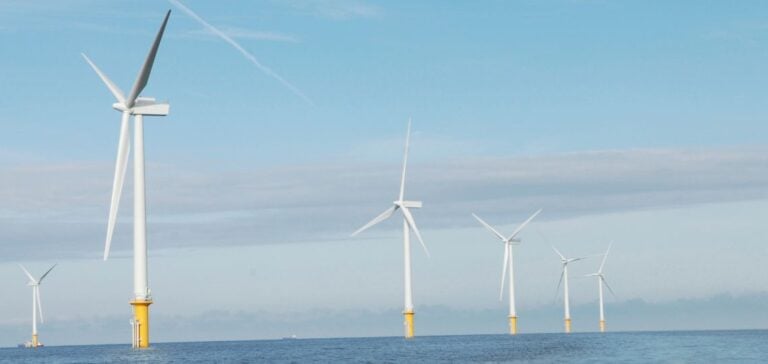He Dreiht, which means “He turns” in Low German, is a major project launched by Energie Baden-Württemberg AG (EnBW). Comprising 64 wind turbines with a total capacity of 960 megawatts, this offshore wind farm will generate enough electricity to power 1.1 million homes. This project, initiated at the first offshore auction in Germany in 2017, represents an investment of 2.4 billion euros. What sets He Dreiht apart is the absence of public funding. “EnBW is playing a crucial role in accelerating Germany’s energy transition, with a total investment of €40 billion between now and 2030,” explains Georg Stamatelopoulos, CEO of EnBW. Of this sum, 13 billion will be allocated to the construction of wind and solar farms, as well as flexible, hydrogen-ready gas-fired power plants.
Logistical and technical challenges
Construction at He Dreiht, around 85 kilometers northwest of Borkum and 110 kilometers west of Helgoland, involves over 500 employees and 60 vessels. The Thialf, one of the world’s largest floating cranes, is in charge of installing the foundations. The foundations will be completed by the summer, followed by the installation of the turbines and cables in early 2025. The latest-generation turbines from Vestas will be used, with each 15-megawatt rotor rotation capable of supplying four households with electricity for a day. The wind farm should be fully operational by the end of 2025.
Fleet management and maintenance
EnBW will be responsible for the technical and commercial management of He Dreiht, with maintenance operations managed from its service base in Emden. The network will be connected by TenneT, a German-Dutch network operator, using an offshore converter station and two high-voltage DC export cables. These cables will be laid over 120 kilometers underwater and 110 kilometers on land, up to the Garrel/Ost converter station in the Cloppenburg region. A consortium of partners including Allianz Capital Partners, AIP and Norges Bank Investment Management holds a 49.9% stake in He Dreiht. EnBW, which has over 15 years’ experience in the planning, construction and operation of offshore wind farms, adds He Dreiht to its portfolio, which also includes wind farms in the Baltic and North Seas.
Future prospects and ambitions
He Dreiht plays a key role in EnBW’s strategy to increase its installed renewable energy capacity from 5.7GW to 10-11.5GW by 2030. Peter Heydecker, Member of the Board for Sustainable Generation Infrastructure, emphasizes: “The successful development of this project demonstrates once again the ability of our offshore team to realize profitable offshore wind energy projects in Germany and Europe”. EnBW and its partners are planning further major developments, including three wind farms in the UK with a total capacity of 5.9GW. The He Dreiht project, financed without public subsidies, demonstrates the economic viability of large-scale renewable energy plants and marks a significant step towards climate neutrality. With massive investment and no public subsidies, EnBW is proving that renewable energies can compete with conventional energy sources.






















